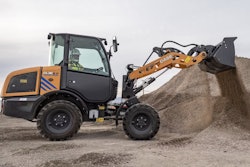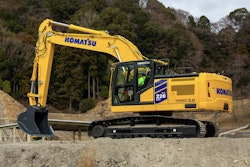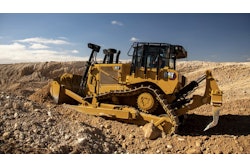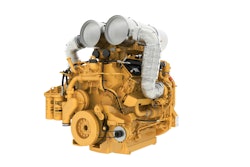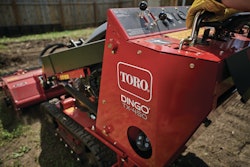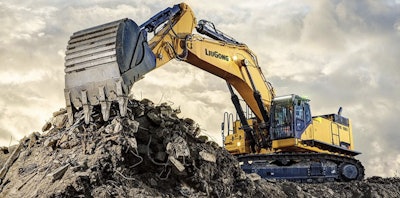
With ambitious growth plans in the next few years and now tariff pressure from a new administration, LiuGong North America is taking a serious look at making some of its machines in the Americas.
LiuGong North America President Andrew Ryan confirmed this in an interview with Equipment World, saying work was underway on this feasibility study before the recent tariff announcements from President Donald Trump. LiuGong first entered the U.S. market in 2008.
“There are a lot of reasons that you do that [diversify manufacturing] under normal circumstances,” Ryan says. “You create natural hedges against changes in currency. You create shorter logistics supply chains to service local markets. That’s been a part of LiuGong strategy for the last 10 years.
“What that does in the current environment is also gives more choices for where we can source products, and we can look at the different countries where we can legitimately build product under country-of-origin rules and leverage those sites to make sure we're providing high performing, good quality products to our customers.”
The deciding factor will be determining whether North American demand for LiuGong equipment can justify an investment of hundreds of millions of dollars for a manufacturing plant, Ryan says.
“Let's theorize that a company wants to build a factory in Brazil,” Ryan says. “If you're only selling 100 machines a year in Brazil, then building a factory is a losing money investment. If through the export business, you can build a base of business that has thousands of units, then it makes sense to put the capital in to build a factory to take care of that market primarily, and maybe adjacent export markets.”
He confirmed there are areas in the Americas that could meet the requirements for finding the best combo of supplier inputs, cost and quality to take care of the North American market.
“There are potential manufacturing centers that meet those requirements within the Americas and can leverage the volumes that we might have in those Tier 4, Stage V [engine] markets that exist in the Americas, alongside some of those volumes that are going to be more likely in the Tier 2 space, just based on the fact that there is enough component commonality to drive assembly volumes and the shipping lanes and logistics cycles that are associated with that factory, may lend itself to have more of an Americas-centric view.”
Currently, LiuGong manufactures its construction equipment in China, India and Brazil, as well as a factory in Argentina that manufactures forklifts. There are advanced plans to establish a LiuGong manufacturing site in Indonesia, but no additional plans for plants in other countries are set in stone yet.
Ryan says LiuGong’s India facility, which produces several thousand pieces of construction equipment each year, is its most mature outside of China. Many of LiuGong’s competitors, including Caterpillar, Komatsu, Case, New Holland and JCB, also manufacture there.
India, which traditionally had a tariff of 8.5% on construction machinery destined for the U.S., was hit with a 26% additional tariff on April 2, though it appears the U.S. and India are working to lower that number, says Ryan.
How do you feel about Trump's new tariffs on China? Let us know below!





